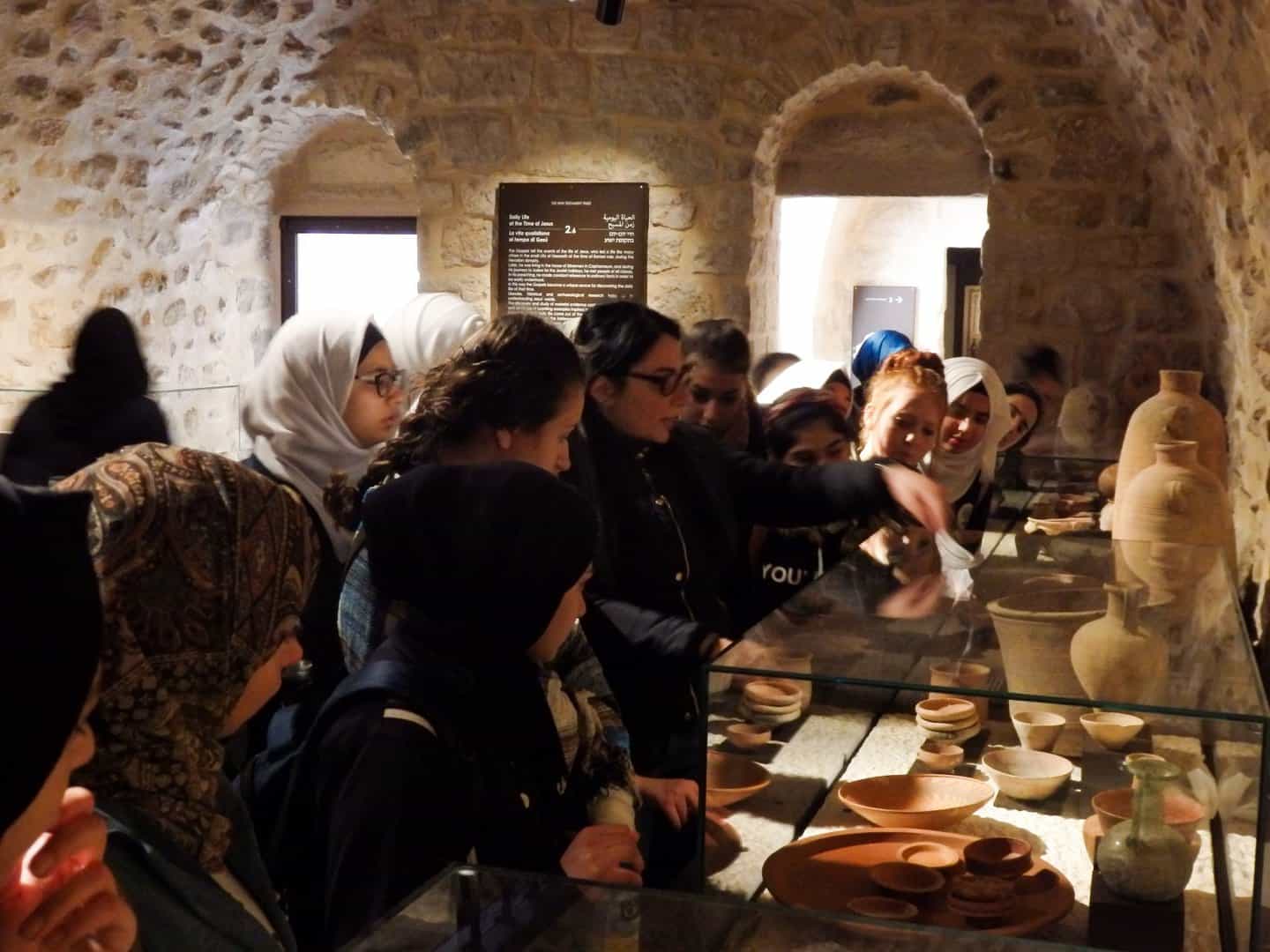
Jerusalem: a new department for education at the Terra Sancta Museum
Association Pro Terra Sancta wins an important European call to create an education department at the Terra Sancta Museum. A three-year project to create activities with schools, access to blind people and new jobs.
The Terra Sancta Museum (TSM) like most museums in the world has closed its doors to the public. Since March 15th the block has become closer and the Franciscan museum, located at the second station of the Via Dolorosa, has also followed the government measures. There are no more tourists and the streets of the Old City of Jerusalem are deserted. Although there are no visitors, behind the scenes, work continues. In addition to the cataloguers who continue their work from home, Sara Cibin, who has been in charge of the TSM project since its inception, is very committed to launching the first phase of the project funded by the European Union: “Terra Sancta Museum (TSM): A living museum for Palestinian youth” (ENI/2019/407-798).
In fact, a few months ago, when no one could even remotely imagine what 2020 had in store for all of us, the Pro Terra Sancta Association and its collaborators celebrated a great satisfaction. On December 10th, 2019 an unexpected Christmas present had arrived: the approval of this important project of 1 million euros to be spent in 42 months.
The purpose? To create the foundations of an education department of the Terra Sancta Museum that could become an educational tool for the entire population. A cultural hub that can host educational activities to foster dialogue, promote tolerance and trigger positive change. The educational vocation, according to Sara Cibin, has been part of the museum’s DNA since its origins. In fact, since its inauguration, in collaboration with the Mosaic Centre association, every year since 2017, almost 2000 students have visited the multimedia projection and chased the archaeological collection.
From the seeds sprouted from this experience grew the idea of a more structured project focused on education. Included in the European Union’s East Jerusalem programme, the project is specifically targeted at the Arab population. The educational effort will start from the Arab world with the aim of networking among schools, cultural associations and museums in the area. During the course there will be collaborations with other indirect partners with whom the museum and ATS pro Terra Sancta have always cooperated: the Custody of the Holy Land, the Mosaic Centre and some local NGOs operating in the school world.
To achieve this goal, together with the project manager and an expert in museum education, three local Arabic native speakers will also be part of the working group. An accountant, a communication expert and a network manager are currently being selected. Three new jobs that become even more valuable given the employment crisis in the country. Three qualifying positions that will help to create, together with the teaching expert, an education department, a well-organized structure that will organize a series of educational and cultural activities dedicated to the entire population.
In order to ensure continuity also at the end of the project, two young graduates will be included who will be given the opportunity to acquire new working skills. “For these two junior figures there will be training abroad” – explains Sara – “We have decided, through young people, to make a bet for the future“. The future of which Sara speaks are the more than 10,000 Palestinian students between 5 and 18 years old, the 2,000 young Palestinians living in East Jerusalem between 18 and 30 years old and their 200 families. Many activities are planned for schools, families and the neighbourhood with the full involvement of the local population.
Special attention will also be given to accessibility. Three complementary activities will allow blind and visually impaired people to visit the museum: the creation of an app compatible with self-reading aids, some three-dimensional replicas of objects from the collection to allow tactile exploration and finally a guided tour with the inclusion of Braille panels.
The Terra Sancta Museum, thanks to this project, reaches and will be accessible to everyone. The precious objects of the archaeological collection and, hopefully soon in the future of the historical collection, will become living material for games, educational activities and dialogue.